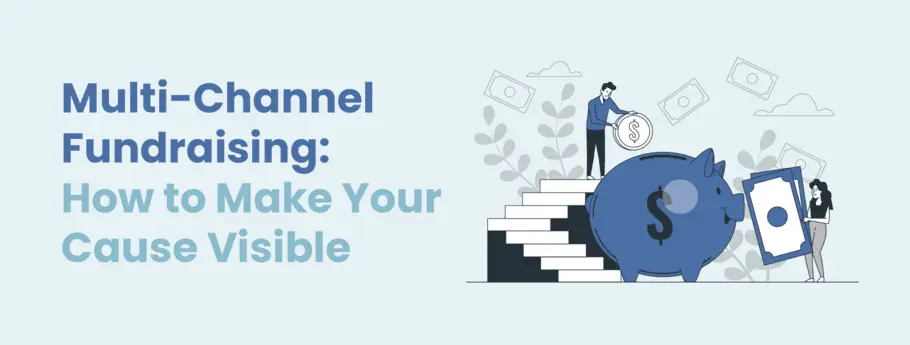Nonprofit Marketing: Just How to Develop a Powerful Brand and Rise Support
Nonprofit Marketing: Just How to Develop a Powerful Brand and Rise Support
Blog Article
The Role of Area Engagement in Nonprofit Fundraising: Structure Lasting Relationships for Sustainable Assistance
Neighborhood engagement is increasingly identified as an important element of successful nonprofit fundraising. By cultivating real relationships with neighborhood stakeholders, companies can cultivate trust and commitment, which are crucial for sustainable support. Nevertheless, the methods and techniques utilized to engage neighborhoods differ commonly, increasing vital concerns about effectiveness and effect. What are the best practices for cultivating these essential connections, and just how can nonprofits measure their success in this field? Comprehending these characteristics can substantially influence the future of fundraising efforts and the overall mission of not-for-profit organizations.
Recognizing Area Engagement
Community interaction is a crucial element of successful nonprofit fundraising efforts. Nonprofits must identify crucial stakeholders-- such as neighborhood members, local organizations, and various other organizations-- to produce effective engagement approaches.
Effective community involvement is predicated on energetic listening and responsiveness to the demands and rate of interests of the community. This procedure involves soliciting responses, comprehending community characteristics, and making sure that the organization's mission lines up with neighborhood concerns. Engaging the area can take numerous types, consisting of public conferences, volunteer possibilities, and partnership efforts, each developed to motivate involvement and investment in the organization's objectives.
In addition, neighborhood involvement should be approached as an ongoing discussion instead than an one-time initiative. By fostering a comprehensive environment where neighborhood voices are listened to and valued, nonprofits can build a solid foundation for future fundraising ventures. Inevitably, a deep understanding of community involvement empowers organizations to produce genuine links that improve their total performance and sustainability.
Benefits of Strong Relationships
Solid relationships formed with area engagement yield many advantages for not-for-profit fundraising initiatives. Firstly, these connections foster trust and credibility, crucial components in encouraging contributors to contribute. When possible fans see a not-for-profit proactively entailed in their area, they are extra likely to rely on its goal and impact.

In addition, these connections facilitate efficient interaction. Nonprofits can utilize their connections to share tales of impact, updates, and needs, ensuring that fans remain enlightened and engaged. This open line of communication not just enhances bonds yet likewise motivates word-of-mouth promo, expanding the nonprofit's reach.
Finally, strong neighborhood ties can bring in new companions and enrollers. Services and people are much more likely to straighten with organizations that show significant community participation, offering extra resources and assistance that can considerably boost fundraising capacities. Thus, cultivating durable partnerships through community engagement is indispensable to a nonprofit's long-lasting fundraising success.
Strategies for Efficient Interaction
Just how can nonprofits efficiently involve their neighborhoods to improve fundraising initiatives? Normal updates, engaging material, and calls-to-action can galvanize community interest and involvement.
2nd, holding community occasions, such as workshops, volunteer opportunities, or fundraising drives, facilitates in person interaction, allowing nonprofits to showcase their effect and efforts. These occasions not only increase funds yet likewise grow relationships and permit area participants to engage read the article straight with the cause.
Third, implementing customized interaction methods can enhance involvement. Customizing messages to particular benefactor sections based upon interests and past payments cultivates a sense of belonging and financial investment in the organization's goal.
Lastly, developing partnerships with neighborhood services and community leaders can magnify outreach efforts. Collective efforts can improve exposure and integrity, showing a collective commitment to the neighborhood's health. By integrating these approaches, nonprofits can develop lasting connections that boost fundraising efforts and drive lasting support.
Determining Involvement Success
While engaging the neighborhood is crucial for effective not-for-profit fundraising, measuring the efficiency of these involvement initiatives is similarly crucial. Developing clear metrics allows organizations to assess exactly how well they are getting in touch with their target market and achieving their fundraising goals. Trick performance indicators (KPIs) such as contributor retention prices, volunteer engagement levels, and interaction on social networks systems provide tangible data for analysis.

Consistently examining these metrics enables companies to pivot their methods when needed, ensuring that neighborhood interaction remains straightened with their general mission. In addition, sharing these results with stakeholders cultivates openness and builds trust fund, motivating more neighborhood participation. Inevitably, a robust dimension structure not only educates future fundraising efforts however also enhances the relationship between the not-for-profit and its supporters, preparing for sustainable success.
Instance Studies in Neighborhood Impact
Many case researches illustrate the extensive influence that community involvement can have on not-for-profit fundraising success. One significant instance is the "Something to chew on" effort, where a local food financial institution partnered with colleges and companies to host neighborhood suppers. These events not only raised funds but likewise promoted a sense of belonging among participants, dramatically increasing donor retention rates.
One more engaging instance is the "Green Spaces Job," which included regional homeowners in the revitalization of city parks. This initiative not only gathered monetary assistance from neighborhood companies however likewise grew a volunteer base that added to continuous upkeep and shows. The feeling of possession and satisfaction amongst area participants converted right into continual payments.
In the world of arts, the "Art for All" project efficiently involved neighborhood musicians and customers to develop collaborative see art installations, resulting in increased exposure and contributions for a local arts nonprofit.
These instances highlight that when nonprofits focus on area participation, they can produce enduring connections that improve fundraising efforts, guaranteeing sustainable assistance and fostering a dynamic area society. Such instances demonstrate that community involvement is not just a strategy but an important column of not-for-profit success.
Final Thought
In final thought, community engagement is important to the success of not-for-profit fundraising efforts. By cultivating solid connections with local stakeholders, organizations boost count on and integrity, resulting in boosted donor retention and commitment. Executing effective involvement techniques and measuring their influence makes sure that nonprofits can adapt and prosper. Eventually, a robust foundation of area support not just intensifies fundraising prospective yet also grows a society of cooperation, vital for achieving long-lasting business goals and maintaining purposeful impact.
Nonprofits have to identify vital stakeholders-- such as community members, local services, and other organizations-- to create effective engagement techniques.

In conclusion, neighborhood involvement is integral to the success of nonprofit fundraising efforts.
Report this page